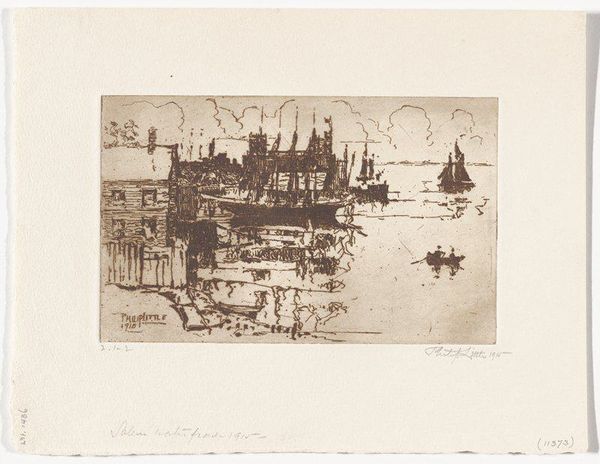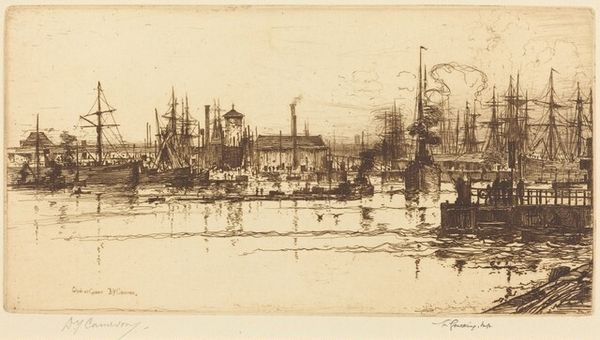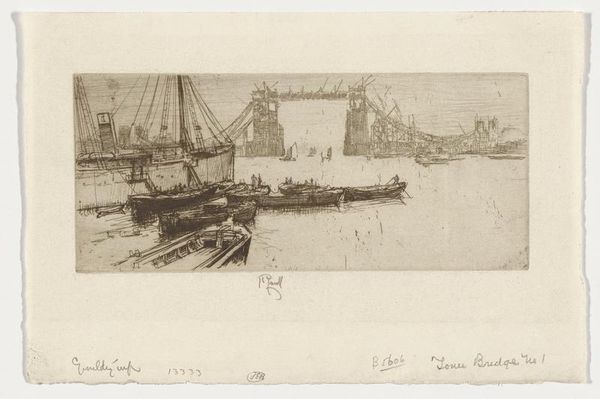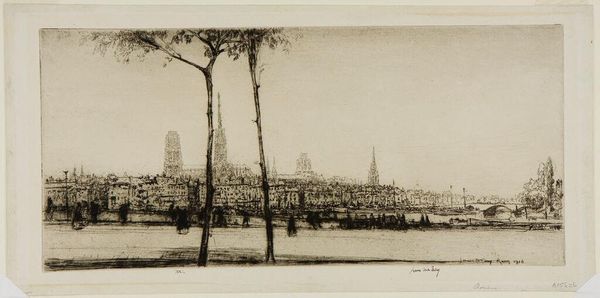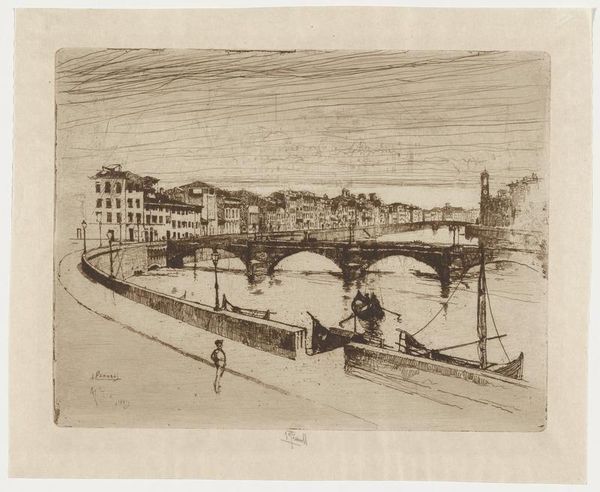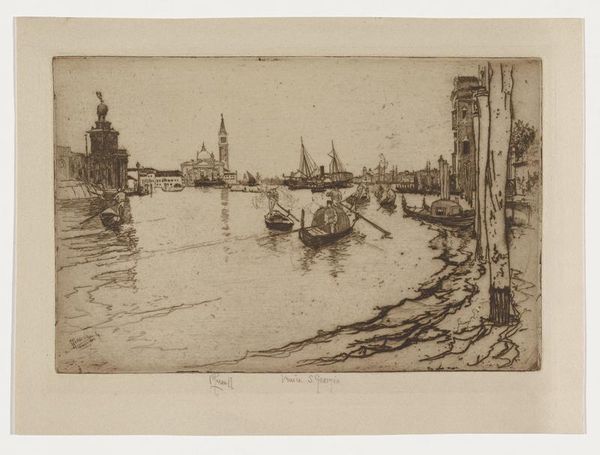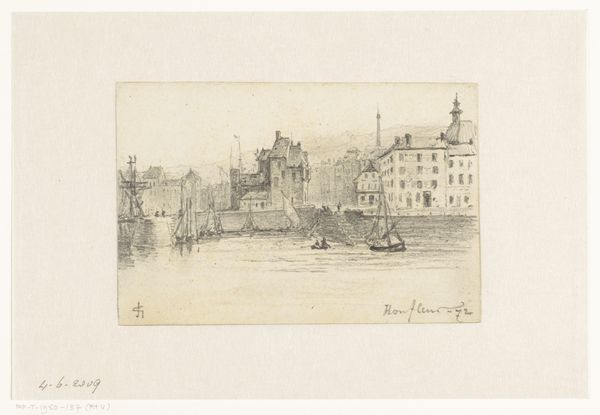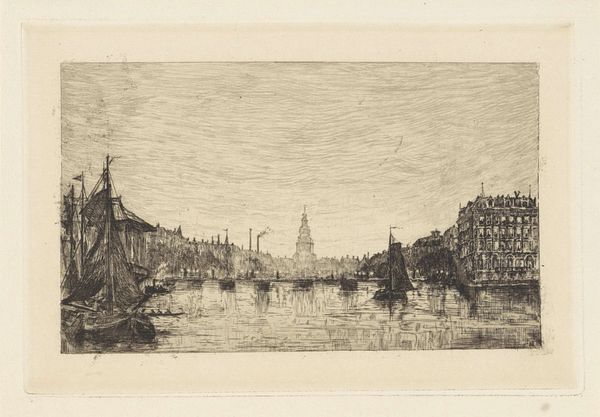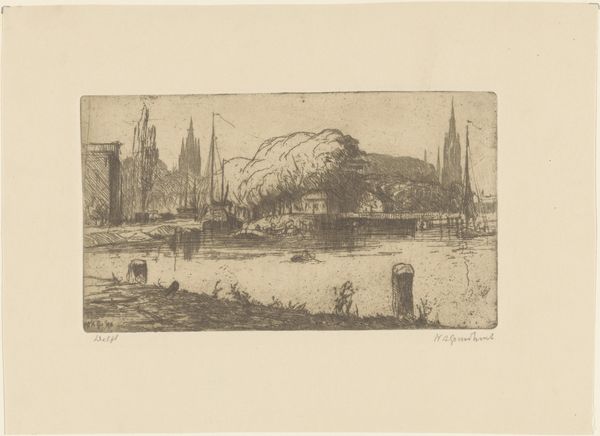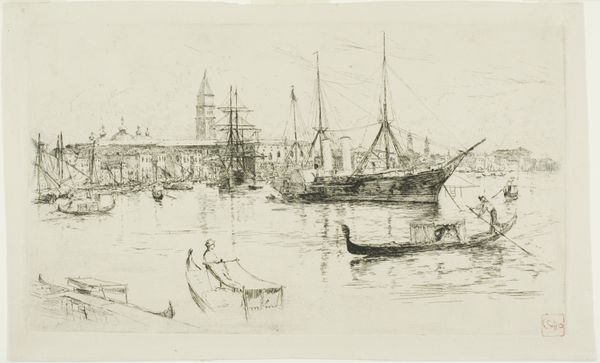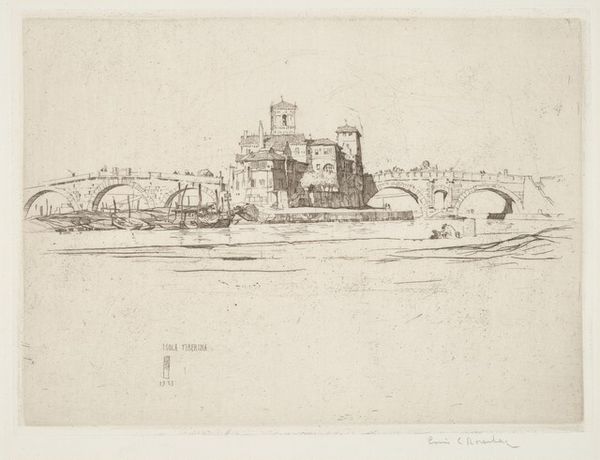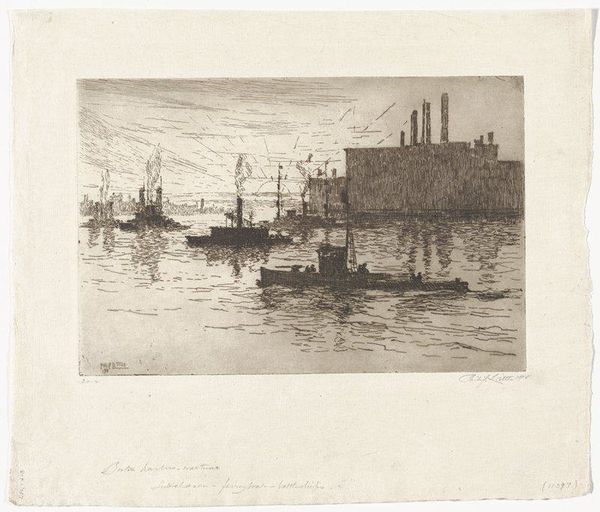
Dimensions: 4 x 6 7/8 in. (10.16 x 17.46 cm) (plate)7 5/16 x 9 3/4 in. (18.57 x 24.77 cm) (sheet)
Copyright: No Copyright - United States
Curator: "The Jobbing District," an etching by Gustav Goetsch, dates to around the early 20th century. The scene captures a moment in Minneapolis’ industrial heart. I’d love to hear your initial take. Editor: A world in monochrome! It's a beautiful yet melancholic little dream. I’m immediately drawn to the repetition of those arches in the bridge... and that lonely horse-drawn cart trundling along. The grays are all perfectly pitched to set a quiet, wistful mood. Curator: I'm intrigued you noticed the bridge first, because it acts almost as a proscenium arch framing the city's hustle. You’ve got those rhythmic curves contrasting beautifully with the angular skyline dotted with factories and what seems to be church spires, so faith and industry are standing shoulder-to-shoulder here. It strikes me as a very clever comment on the city's development at the time. Editor: The city looks grand in the background, even romantic, veiled as it is in a gentle smog. I read this urban vignette as a story about the small figure versus the grand design – it's an exploration of labor and how individual toil contributed to building a city. Did Goetsch imbue his art with any kind of personal symbolism? Curator: What’s interesting is how Goetsch walked the line between realism and impressionism, not just in the general scene, but his technical choices. Take how he employs the etching lines here. There’s real precision in the architectural details, a pure realist touch, and a slightly hazier approach that almost hides that, like with the smoke billows... a softened, impressionistic kind of effect. Perhaps he did this deliberately to mirror a romantic notion of rapid growth in industry? Editor: The soft focus gives a universal feel. Despite the work being titled and very specifically of Minneapolis, this evokes a general sense of turn of the century development and industrial growth—very much a study in change and all that accompanies it. It’s very elegantly captured. Curator: You've pinned it, I think. It's specific and universal simultaneously. That interplay…it’s quite something. Editor: Precisely—a ghostly snapshot offering itself up as an observation and meditation all in one go.
